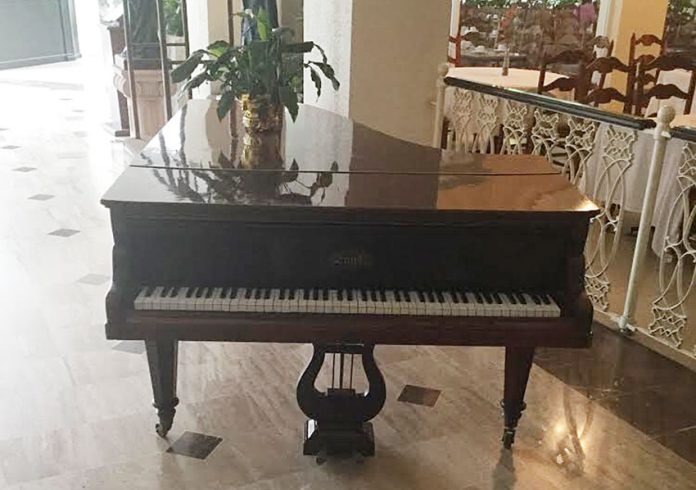One of the pleasures of driving through remote parts of Mexico is expecting or hoping to find the unexpected.
During six transits over 18 months to Guatemala I’ve encountered a unique Mothers’ Day celebration in a cantina in Ensenada, a moving — and far removed from Halloween and trick or treat — All Saints celebration in Zitácuaro and, on the most recent, the Treasure of the Sierra Madre.
Of course I found it in the Sierra Madre, and of course I won’t disclose its exact location.
Treasure comes in many forms. The Sierra Madre treasure’s form today is not bags of gold dust like the ones Bogart lost in the movie, but a spectacularly beautiful and extraordinarily valuable European grand piano, posing regally but totally incognito in a hotel lobby. In a mining town.
Maybe worth over 2 million pesos (US $100,000), a modern treasure.
Move over Steinway and Yamaha. From the late 1700s on, the most prized pianos in the music world have come from the ateliers of the French Erard family, so how did one end up in Mexico’s Sierra Madre?
If pianos could talk, I’d ask it whether it was made for a honky-tonk, a touring culture show featuring a soprano and a Shakespeare reader or the drawing room of the home of a lucky prospector.
Did it get to Mexico from France with the help of burros or mules? Or was it moved inch by inch by a band of struggling laborers like a piano I know in Guatemala that took weeks to deliver to a mountainous road-less destination?
As the photo suggests, the Erard family were also famous for making harps, and true Erard pianos have a distinctive harp feature. The sounding board is polished hardwoods, no doubt of European origin, adding measurably to an image of beauty.
“They’re supposed to be beautiful. It’s part of the act,” according to John, my co-pilot and pianist (and harpist).
Maybe one of the world’s piano sleuths can answer my questions.
I have the serial number.
The writer is a Guatemala-based journalist.
